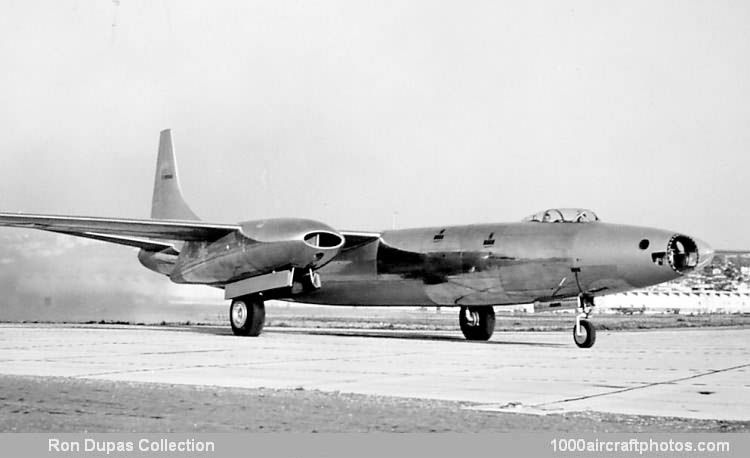Three prototypes, serialed 45-59582 to 59584 and designated XB-46, were ordered on February 27, 1945, and four other manufacturers also were awarded prototype contracts, North American for its XB-45, and Boeing, Martin, and Northrop for their XB-47, XB-48, and XB-49 respectively. In August, most of Convair's projects were cancelled, but work continued on the XB-46 at a slower pace although funds for two aircraft were diverted to the ill-fated XA-44/XB-53 project. However, Boeing revised its XB-47 design into a swept-wing six-jet concept and it was obvious, barring a design error, that it would outperform the other designs with ease.
The sole XB-46 (45-59582), devoid of military equipment, was thus already outclassed when it first flew on April 2, 1947, flown by E.D. 'Sam' Shannon, with Bill Martin as co-pilot. Despite almost perfect streamlining, its top speed of 545 mph (877 kmh) was below that of the B-45.
The XB-46 was claimed to be the first US aircraft with a complete pneumatic system for the actuation of the landing gear, bomb bay and crew doors, and brakes. Another unusual feature was that to permit almost full-span Fowler-type flaps, roll control was achieved primarily by 20 ft (6.10 m) long spoilers, the ailerons being just 6 ft (1.83 m) in length. There were few problems during flight testing at Muroc with Phase I (company flight tests) completed by September after 14 flights and 23 hours. The major change was to substitute Allison-built General Electric J35-A-3 axial-flow turbojet engines and the XB-46 was then flown to Wright Field. Phil Prophett later became project test pilot and the USAF assigned Captain Glen Edwards to the XB-46, who was subsequently killed testing the Northrop YB-49 and gave his name to the Muroc base.
Following the completion of trials, the elegant XB-46 was flown to Eglin, Florida, and after various tests, was scrapped in mid-1950. A photographic-reconnaissance role was discussed for the B-46 but never implemented."
